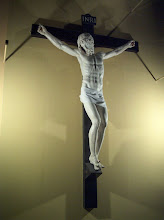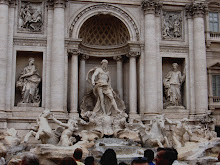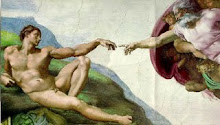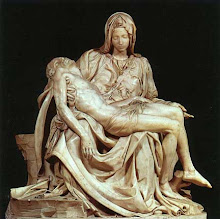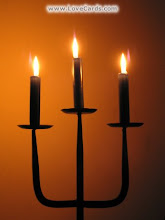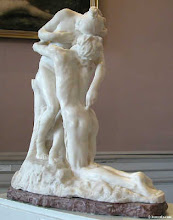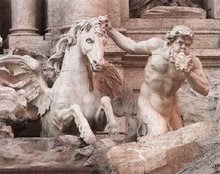
martedì
lunedì
:: Augustin, Jacques-Jean-Baptiste...

AUGUSTIN, Jacques-Jean-Baptiste
(b. 1759, Saint-Dié, d. 1832, Paris)
Biography French painter. After receiving instruction in art from Jean Girardet (1709–78) and Jean-Baptiste-Charles Claudot (1733–1805), he went to Paris in 1781, where he won recognition as a miniature painter. The miniatures he painted in the 1790s, for example his portrait of Mme Vanhée, née Dewinck (1792; Paris, Louvre), are among his most animated works; often portraying figures in a landscape setting, they develop the exuberant style of Niclas Lafrensen and Peter Adolf Hall. He also admired the work of Jean-Baptiste Greuze, whose Bacchante (Waddesdon Manor, Bucks, NT) in his own collection he copied in miniature (London, Wallace) and in enamel (Paris, Louvre).
Augustin .
AUGUSTIN, Jacques-Jean-Baptiste
Augustin, Jacques Jean Baptiste.
Jean-Baptiste Jacques Augustin .
Augustin, Jacques-Jean-Baptiste.
AUGUSTIN, Jacques-Jean.
AUGUSTIN, Jacques-Jean-Baptiste .
AUGUSTIN, Jacques-Jean-Baptiste .
AUGUSTIN, Jacques-Jean-Baptiste's
AUGUSTIN, Jacques-Jean-Baptiste
:: Assereto, Gioachino...



ASSERETO, Gioachino
(b. 1600, Genova, d. 1649, Genova)
Biography
Italian painter. At the age of 12 he studied with Luciano Borzone and c. 1614 entered the Genoese studio of Andrea Ansaldo. Among a number of lost early paintings was a large Temptation of St Anthony done at the age of 16. Several complex compositions with small figures, including the Apotheosis of St Thomas Aquinas (Lille, Musée des Beaux-Arts), the Last Supper (Genoa, Museo Accademia Ligustica di Belle Arti), the Stoning of St Stephen (Lucca, Museo e Pinacoteca Nazionale) and the Crowning of the Virgin (Taggia, Dominican Convent), perhaps date from 1616-26. These are close in style to works such as Bernardo Strozzi's bozzetto (c. 1620, Genoa, Museo Accademia Ligustica di Belle Arti) for an altarpiece of Paradise (destroyed) and to other contemporary works by Ansaldo, Giulio Benso and Giovanni Andrea de' Ferrari, which also derive their figure style from Mannerism.
Assereto's earliest dated painting, SS John the Baptist, Bernard, Catherine, Lucy and George (1626; Recco, S Giovanni Battista), is distinguished by its silvery colour and dramatic contrasts of light and dark, and by the powerful realism and vitality of the individual saints. Here he absorbed Borzone's sfumato technique and skill as a portrait painter, while the crisp contours of the drapery suggest Ansaldo. Assereto's work from c. 1626-36 sparkles with rich colour and detail, as in the strikingly naturalistic and intense Ecstasy of St Francis (1636, Genoa, Cassa di Risparmio). The work of the Lombard Mannerist painters Cerano, Morazzone and Giulio Cesare Procaccini that had influenced Strozzi and Ansaldo before 1620 also had an effect on Assereto's early work. This is apparent in the elongated figures and high-keyed colours of his two octagonal vault frescoes, David and Abimelech and SS John and Peter Healing the Lame Man, in SS Annunziata del Vastato, Genoa. The frescoes were dated c. 1630. Sharp-edged draperies, meticulous ornamental detail and jewel-like colours ranging from lime to pink and orange characterize Assereto's vivid narrative painting Alexander and Diogenes (c. 1630; Berlin, Staatliche Museen) and his altarpiece SS Cosmas and Damian Curing the Sick (Genoa, SS Cosma e Damiano), in which some of the figures resemble those by Orazio de' Ferrari, who may have worked with Assereto in Ansaldo's studio.
:: Araldi Alessandro...

ARALDI, Alessandro
(b. ca. 1460, Parma, d. ca. 1530, Parma)
Biography
Alessandro Araldi is an Italian painter of Parma about whom little is known. He was an assistant to Cristoforo Caselli, and in the Mazzola workshop. He was influenced by Francia and Costa. He borrowed from the moderate Bolognese Classicism.
Araldi Alessandro .
Araldi .
Alessandro Araldi .
Alessandro Araldi.
Alessandro Araldi .
Araldi Alessandro .
Alessandro Araldi.
Araldi Alessandro.
:: Salzillo, Francisco...

SALZILLO, Francisco
(b. 1707, Murcia, d. 1783, Murcia)
Biography
Salzillo (also spelled Zarcillo, Salsillo, or Salcillo), sculptor, a prolific creator of figures for the Holy Week procession. He is considered by some authorities to be the greatest sculptor in 18th-century Spain and by others as merely an excellent folk artist.
Growing up in provincial Murcia, he received his training from his father, a Neapolitan sculptor who had a studio that produced religious statues. He entered a Dominican monastery as a youth, but on the death of his father in 1727 he left to take charge of the family studio. Remaining in Murcia all his life, he produced an enormous number of polychrome religious figures with the assistance of his brothers and sister.
In Salzillo's work the sacred persons are highly humanized, appealing to the popular audience that demanded pathos and sentimental realism. Much of his best work is in the Salzillo Museum in Murcia.
:: Salviati, Giuseppe...



SALVIATI, Giuseppe
(b. ca. 1520, Castelnuovo di Garfagnana, d. ca. 1575, Venezia)
Biography
Italian painter (originally Giuseppe Porta). He was apprenticed to Francesco Salviati (whose surname he took) in Rome from 1535 and apparently assisted him in the decoration of a number of façades there. The gravitas and sculptural quality of the Roman figural style are reflected in Giuseppe's later work. In 1539, with Francesco, he left Rome, stopping in Florence and Bologna, where he met Giorgio Vasari, and arriving in Venice by 11 July. Giuseppe's earliest known independent works are illustrations for Le sorti, a book on fortune-telling published by Francesco Marcolini (Venice, 1540). The frontispiece, traditionally attributed to him, is copied from an engraving by Marco Dente.
He decided to settle in Venice, and spent most of his successful career in Venice, decorating villas and palazzos, although most of his frescoes have since been lost. He contributed to the decoration in the Biblioteca Marciana, and executed a number of altarpieces that reveal the growing influence of Titian and Veronese on his originally mannerist idiom.
Salviati left in 1541, but Porta stayed on, becoming famous for his decorations on palazzo façades, none of which survive. He also decorated numerous religious buildings, painting vast ceilings of illusionistic figures. For his altarpieces, Porta adopted the traditional Venetian oil technique of modeling figures using multiple layers of paint.
In 1565 Porta returned to Rome to complete the frescoes for the Sala Regia in the Vatican, left unfinished at Salviati's death. The following year he was elected to Florence's Accademia del Disegno and completed his most important commission: a ceiling fresco in Venice's ducal palace, destroyed soon afterward. In later years, he devoted time to other interests, such as his mathematical accomplishments. He published mathematically-oriented treatises on decorative column design.
:: Salviati, Cecchino del...











SALVIATI, Cecchino del
(b. 1510, Firenze, d. 1563, Roma)
Biography
Florentine Mannerist painter, a pupil of Andrea del Sarto. Originally Francesco de' Rossi, he adopted his name from his patron Cardinal Giovanni Salviati, with whom he went to Rome c. 1530 and for whom he painted the work that established his reputation there - the fresco of the Visitation (1538) in S. Giovanni Decollato. In 1539 he travelled to Venice, and from the 1540s led a restless life, working mainly in Florence and Rome, but also visiting Fontainebleau in 1556-57. He was one of the leading fresco decorators of his day, specializing in learned and elaborate multi-figure compositions, typically Mannerist in their artificiality and abstruseness, and similar in style to those of his friend Vasari (although Salviati was an artist of higher caliber). His finest works are perhaps the frescoes on the story of the ancient tyrant Furius Camillus (1543-45) in the Sala dell' Udienza of the Palazzo Vecchio, Florence, intended as an allegory of Cosimo de' Medici's reign.
Salviati also made designs for tapestries and was noted for his portraits, which were Florentine in their direct characterization but north Italian in their richness in colour.
Mais em
Mais em
:: Salucci, Alessandro...

SALUCCI, Alessandro
(b. 1590, Firenze, d. 1655/60, Roma)
Biography
Italian painter, specialized in imaginary architectural perspectives and harbour views, in which the figures were executed by other artists, most notably Jan Miel and Michelangelo Cerquozzi. His pictures were praised by contemporary and near contemporary writers, and during the 17th century were popular with private collectors in both Florence and Rome. However, many of the paintings mentioned in contemporary sources remain untraced.
He is first documented in Rome in 1628, when, with Andrea Sacchi and Pietro da Cortona, he worked on the fresco decorations of the Villa Sacchetti (now Chigi), Castelfusano (near Ostia), to which he contributed personifications of the River Nile and the River Rhône. He became a member of the Accademia di San Luca in Rome in 1634, and after 1635 he was engaged on frescoes depicting sacred subjects in S Maria in Vallicella, Rome. From the mid-1630s onward Salucci collaborated with Miel on the imaginary architectural subjects for which he is best known. The two artists also collaborated between 1640 and 1645 on a series of four important Imaginary Architectural Perspectives. His most typical paintings date from c. 1650-60.
Salucci, Alessandro .
Salucci, Alessandro.
SALUCCI, Alessandro .
Salucci Alessandro .
E mais em
Salucci, Alessandro .
Alessandro SALUCCI .
SALUCCI, Alessandro .
ALESSANDRO SALUCCI
:: Sallaert, Anthonis...

SALLAERT, Anthonis
(b. 1580/90, Bruxelles, d. 1650, Bruxelles)
Biography
Anthonis Sallaert (Sallaerts or Sallarts), Flemish painter, draughtsman and printmaker. He became a master painter in Brussels in 1613 and executed numerous commissions, mostly of a religious nature, for the Archduke Albert's court, the new Jesuit church and the town hall. He also made paintings for churches in the villages around Brussels, notably the cycle of 12 paintings depicting the History of the Church at Alsemberg for Onze-Lieve-Vrouwkerk at Alsemberg (1647-49; in situ). Secular subjects, including mythological themes, occur in his tapestry designs, such as those for the Story of Theseus (c. 1620-35), woven in the Brussels workshop of Jan Raes the Younger (fl 1628-37).
:: Salimbeni, Ventura...

SALIMBENI, Ventura
(b. 1567, Siena, d. 1613, Siena)
Biography
Italian painter, draughstman and engraver. The son of Arcangelo Salimbeni (fl 1567–80/89) and Battista Focari, widow of Eugenio Vanni, he was first taught painting in his native Siena by his father, as was his half-brother Francesco Vanni, with whom he was often confused. Ventura possibly spent some time in northern Italy before going to Rome, where he worked from 1588, collaborating on the fresco decoration of the Biblioteca Apostolica Vaticana (the Vatican Library) during the reign of Pope Sixtus V (reg 1585–90). Salimbeni's painting during 1590–91, when he worked in Il Gesu and S Maria Maggiore, Rome, reflects the influence of the Cavaliere d'Arpino, Cherubino Alberti and Andrea Lilli. The few engravings that Salimbeni executed were made in Rome. Of these, seven survive, dated between 1589 and 1594.
In 1595 he returned to Siena where he became one of the last leaders of the Mannerist school, and completed painting cycles for Sienese churches such as Santa Trinita and Santo Spirito. He continued to create paintings for churches throughout Italy, including Assisi and Florence. For almost all of his painting cycles he first created detailed prepatory drawings.
Ventura Salimbeni .
Ventura Salimbeni.
Ventura Salimbeni .
Ventura Salimbeni .
Ventura Salimbeni .
Ventura Salimbeni .
Salimbeni, Ventura .
Salimbeni, Ventura .
Ventura Salimbeni.
:: Saliba, Antonio de...

SALIBA, Antonio de
(b. ca. 1466, Messina, d. ca. 1535, Messina)
Biography
Italian painter, also called Antonello da Messina, nephew of the more famous Antonello da Messina. Although Antonio was apprenticed to his cousin Jacobello d'Antonio in January 1480, his painting more closely imitates that of his uncle, Antonello da Messina. This fact, and the similarity of their names, led to the two artists being confused with each other, a situation perhaps intentionally encouraged by de Saliba who used various forms of his uncle's signature on his works. His paintings flaunt their debt to his uncle's style, incorporating elements introduced by Giovanni Bellini.
In 1497 he returned to Messina and continued to produce smaller works, still inspired by Antonello da Messina, albeit in stiffer, more popular forms (Virgin Enthroned, Castel Ursino, Catania, 1497; Polyptych, Cathedral, Taormina, 1503-04).
Antonello de Saliba
sabato
:: Elsheimer, Adam...






ELSHEIMER, Adam
(b. 1578, Frankfurt/Main, d. 1610, Roma)
Biography
German painter, one of the first masters of the idyllic landscape. He was trained in the dry manner of Flemish realism, but he acquired a liberating interest in light, atmosphere, and color when he settled (1598) in Italy. In Venice he worked with his countryman Rottenhammer, then settled in Rome in 1600. His early Mannerist style gave way to a more direct manner in which he showed great sensitivity to effects of light; his nocturnal scenes are particularly original, bringing out the best in his lyrical temperament, and he is credited with being the first artist to represent the constellations of the night sky accurately (in The Flight into Egypt). He painted a few pictures in which figures predominate, but generally they are fused into a harmonious unity with their landscape settings. They are invariably on a small scale and on copper (the only exception is a self-portrait in the Uffizi, Florence, of doubtful attribution), but although exquisitely executed they have a grandeur out of all proportion to their size.
Elsheimer achieved fame during his lifetime and there are numerous contemporary copies of his works. His paintings were engraved by his pupil and patron, the Dutch amateur artist Count Hendrick Goudt (1573-1648), and Elsheimer himself made a number of etchings. In spite of his popularity he was personally unsuccessful and died in poverty. Sandrart says he suffered from melancholia and was often unable to work; apparently he was imprisoned for debt. Rubens was a friend of Elsheimer and after his death lamented his "sin of sloth, by which he has deprived the world of the most beautiful things"; he also wrote "I have never seen his equal in the realm of small figures, of landscapes, and of so many other subjects."
Although Elsheimer died young and his output was small he played a key role in the development of 17th-century landscape painting, and his influence is apparent in the work of many other 17th-century artists.
:: Eckersberg, Christoffer Wilhelm...


ECKERSBERG, Christoffer Wilhelm
(b. 1783, Blakrog, d. 1853, København)
Biography
Danish painter. After being trained in Copenhagen and studying in Paris (1810-13) under Jacques-Louis David, he continued his studies in Rome (1814), where he executed a masterly portrait of his friend Thorvaldsen (Royal Academy, Copenhagen, 1815). Returning to Copenhagen in 1816, he occupied himself mainly with portraits, minutely rendering the features of his models with a Neoclassic feeling for c1arity and purity of line. He also painted many landscapes, however (as he had done in Rome), and as an influential teacher at the Copenhagen Academy (from 1818) he introduced painting from nature into the curriculum. He also executed some religious themes and subjects from Danish history in Christiansborg Palace.
His pupils included Johan Christian Dahl and Christen Købke. He has been called 'the father of Danish painting' because of the influence he exerted on Danish painters in the second quarter of the 19th century. With Christen Købke he was the leading painter of the Danish 'Golden Age' (c. 1800-1850).
domenica
:: Pintura de Gabriel Metsu...

O quadro "A criança doente" traz um bebê doente e abatido que se esvalece no colo de uma mulher. Do lado deles tem um armário, uma tigela com colher. Atrás, um mapa aberto e um quadro mostrando a cruxificação de Cristo. Possivelmente há mais a ser visto nesta imagem de Gabriel Metsu do que parece à primeira vista. Pode ser que a mulher represente a virtude de Cristo e o amor ao próximo. A obra está exposta no Rijksmuseum, museu nacional dos Países Baixos, localizado em Amsterdã.
Via Blog do Noblat
(Com colaboração de Catharina Mafra)
(Com colaboração de Catharina Mafra)
Veja mais Pintura de Gabriel Metsu em LO SPIRITO BAROQUE
sabato
:: Tassaert, Octave...

TASSAERT, Octave
(b. 1800, Paris, d. 1874, Paris)
Biography
Painter and printmaker, part of a French family of artists of Flemish origin, son of Jean-Joseph-François Tassaert, who worked mainly in Paris, and grandson of Jean-Pierre-Antoine Tassaert, one of the leading portrait sculptors working in Berlin in the late 18th century.
As a child Octave worked with his brother Paul Tassaert (d. 1855), producing engravings, but he later turned to painting and from 1817 to 1825 studied at the Ecole des Beaux-Arts in Paris, first under Alexis-François Girard (1787-1870) and then Guillaume Lethiere. In 1823 and 1824 he tried unsuccessfully to win the Prix de Rome, an early failure that greatly disheartened him. For much of his career, until 1849, he continued to work in the graphic arts, as well as painting, producing lithographs and drawings on various subjects: historical scenes from the First Empire, portraits, and mythological and genre scenes. He also produced illustrations for the Romantic novels of Victor Hugo, Alexandre Dumas pere and François-René Chateaubriand.
Though he achieved moderate success at the Salon, it was the graphic work that provided his small income during this period. Later he achieved success as a genre painter, depicting the widespread poverty prevalent in 19th-century Paris.
Octave Tassaert
TASSAERT, Octave
Octave Tassaert 1800-1874
Octave Tassaert - Wikimedia
Octave Tassaert
Octave Tassaert
French Painting from the Musee
Nicolas Francois Octave Tassaert
Octave Tassaert
octave tassaert
lunedì
:: Giordano, Luca...










GIORDANO, Luca
(b. 1632, Napoli, d. 1705, Napoli)
Biography
Neapolitan painter, the most important Italian decorative artist of the second half of the 17th century. He was nicknamed `Luca Fa Presto' (Luke work quickly) because of his prodigious speed of execution and huge output.
He began in the circle of Ribera, but his style became much more colorful under the influence of such great decorative painters as Veronese, whose works he saw on his extensive travels. Indeed, he absorbed a host of influences and was said to be able to imitate other artists' styles with ease. His work was varied also in subject-matter, although he was primarily a religious and mythological painter.
He worked mainly in Naples, but also extensively in Florence and Venice, and his work had great influence in Italy. After five years back in Naples, Giordano went to Florence again where he produced one of his most important works, the gallery frescoes in the Palazzo Medici-Riccardi (1682). These airy, luminous frescos provide a foretaste of eighteenth century art.
In 1692 he was called to Spain by Charles II and stayed there for 10 years, painting in Madrid, Toledo, and the Escorial. His last work when he returned to Naples was the ceiling of the Treasury Chapel of S. Martino. In his personal self-confidence and courtliness, and in the open, airy compositions and light luminous colors of his work, Giordano presages such great 18th-century painters as Tiepolo.
Iscriviti a:
Post (Atom)













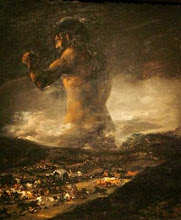








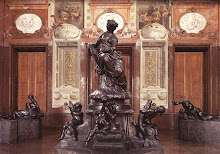
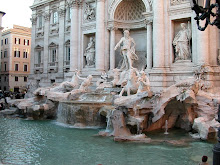













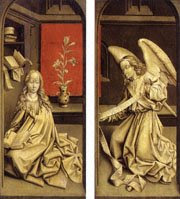.jpg)


.jpg)
